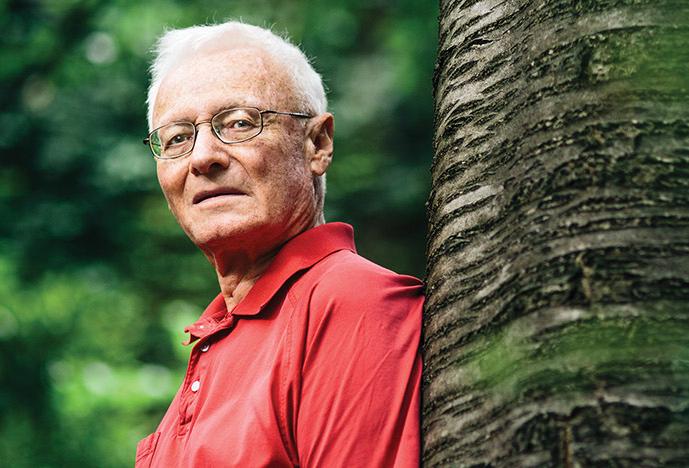
Neal Nathanson
Claims to Fame
Associate Dean for Global Health Programs, University of Pennsylvania School of Medicine; former Vice Provost for Research, University of Pennsylvania; former director, Office of AIDS Research, National Institutes of Health; author, Viral Pathogenesis and Immunity.
Roll Call
“In the middle of my second year of residency, I got hit by the Cambridge draft board,” says Neal Nathanson ’53. He was halfway across the country, at the University of Chicago, but as a Cambridge native, he fell under the board’s jurisdiction. Called as part of the “doctor draft,” Nathanson was to be inducted as a private; he had 30 days to find another commission. “I was desperate,” he says. He turned to his chief resident, Tom Grayston, who had just returned to Chicago from two years of draft obligation service in the Epidemic Intelligence Service at the Communicable Disease Center, forerunner to today’s Centers for Disease Control and Prevention. “Tom made a call,” he says. “Another CDC recruit hadn’t shown up, so they agreed to take me on.”
Accidental Epidemiologist
On April 12, 1955, a month after Nathanson had joined the EIS, the Francis field trial of the inactivated poliomyelitis vaccine reported successful results. Approval and distribution of the vaccine was immediate. Within two weeks, however, reports of vaccinated children developing paralytic polio drifted in. “This caused a tremendous brouhaha,” says Nathanson. Alexander Langmuir, the EIS founder, wasted no time; he created a poliomyelitis surveillance unit, and named the newcomer Nathanson as its chief. “I had no background in epidemiology and no qualifications whatsoever,” says Nathanson. With Langmuir’s supervision, Nathanson headed a team that traced most of the cases to one manufacturer. The U.S. Department of Health, Education, and Welfare shut that lab down and let the other manufacturers resume distribution.
In with the New
Although encouraged to stay at EIS, Nathanson became fascinated by the basic science of the poliovirus after listening to a talk by David Bodian, a professor at the Johns Hopkins University School of Public Health. “I wrote him informally asking if I could do a postdoctoral fellowship in viral pathogenesis,” he says. Once again, Nathanson was lucky. The National Foundation for Infantile Paralysis gave Bodian funds for an additional fellowship.
Nathanson remained at Hopkins for 22 years, but, by the late 70s, research priorities changed and he needed a new home for his basic science research. In 1979, he moved to the University of Pennsylvania’s School of Medicine, to become chair of microbiology.
Return to Service
Nathanson’s interest in viruses had always focused on those that affect the nervous system. In the 1990s, he began investigating neuroAIDS, also called HIV encephalopathy. He began a research program on the condition, joined the “Baltimore Committee,” which was advising the NIH on its developing HIV vaccine program, and ended up as the director of the Office of AIDS Research. In those early days, Nathanson says, life expectancy for those infected was perhaps five years. Then basic science research began to pay off. Drugs could control the virus and make the infection manageable. Today, the life expectancy of an infected 20-year-old—with proper treatment—is 50 years.